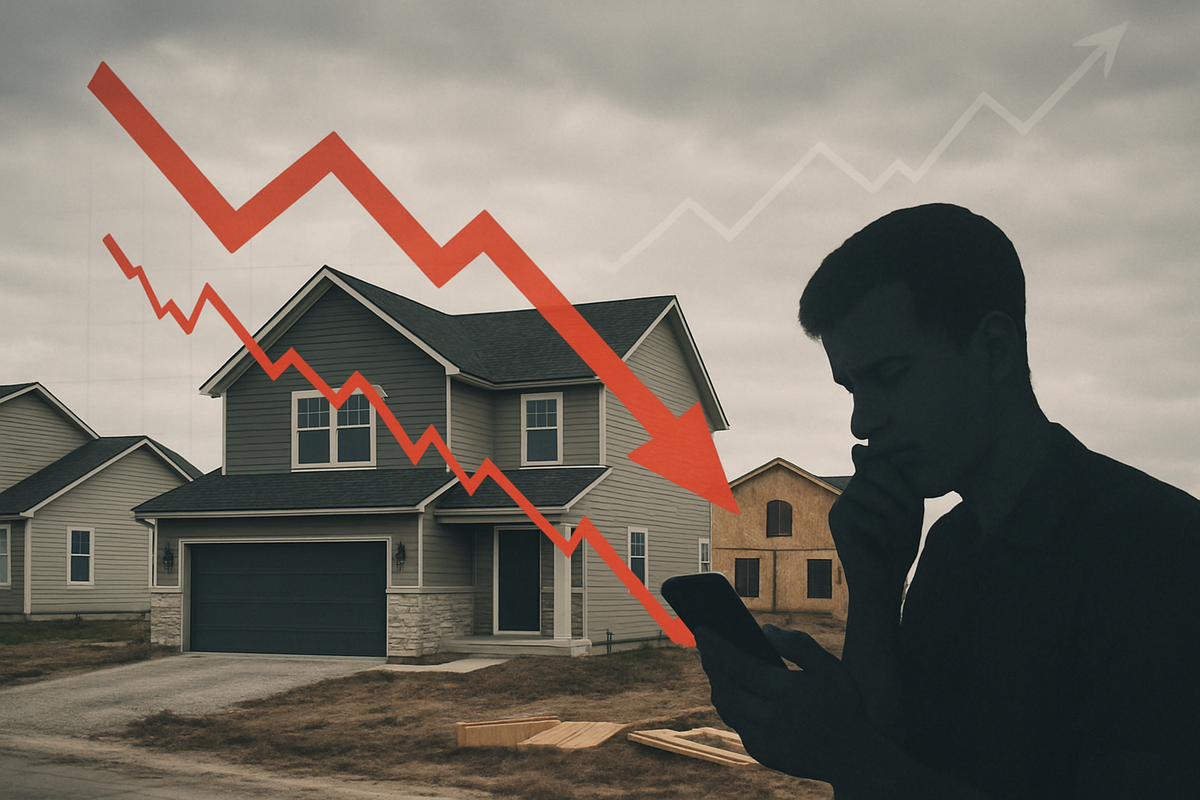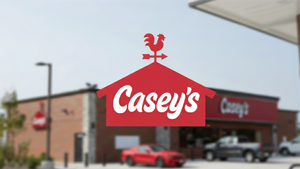
Evercore ISI Cuts Rating as Homebuilder Grapples with Demand and Affordability Challenges
KB Home (NYSE: KBH), one of the nation's prominent homebuilders, is currently navigating a period of heightened scrutiny, with its stock facing significant downgrades from leading financial analysts. On October 7, 2025, Evercore ISI Group notably lowered its rating on KB Home from "Outperform" to "In-Line," slashing its price target, signaling growing concerns about the company's ability to maintain its competitive edge and stimulate demand in a volatile housing market. This move underscores a broader apprehension within the industry as homebuilders contend with persistent affordability issues, fluctuating interest rates, and a cautious consumer base.
The downgrade comes as the U.S. housing market continues to recalibrate, marked by easing, yet still elevated, mortgage rates and a gradual increase in housing inventory. While these factors offer a glimmer of hope for prospective buyers, they simultaneously present a complex landscape for builders like KB Home, who must strategically adapt to evolving buyer behaviors and economic headwinds. The immediate implication for KB Home has been a negative reaction in its stock performance, reflecting investor anxiety about the company's near-term growth prospects amidst these challenging conditions.
Analyst Sentiment Sours as Market Dynamics Shift
The recent downgrade by Evercore ISI Group's analyst Stephen Kim on October 7, 2025, from "Outperform" to "In-Line," with a reduced price target of $65.00 from $73.00, has been a pivotal moment for KB Home (NYSE: KBH). The core reasons underpinning this more conservative outlook are multifaceted. Analysts expressed concerns that despite improvements in housing affordability, KB Home might struggle to sustain its competitive advantage. Critically, a significant response in buyer demand has not materialized, suggesting that even with efforts to make homes more accessible, consumers remain hesitant. Furthermore, potential difficulties arising from the company's strategic adjustments have contributed to a cautious stance. This analyst action is set against a backdrop of intensified volatility in the housing sector, characterized by escalating affordability issues, persistently high mortgage rates, macroeconomic uncertainties, and a noticeable retreat in overall buyer demand, which is dampening sales volumes and compressing profit margins for homebuilders across the nation.
This Evercore ISI downgrade is not an isolated incident. Earlier, on September 29, 2025, JP Morgan analyst Michael Rehaut maintained a "Neutral" rating but lowered the price target from $63.00 to $53.00. Even more significantly, on June 30, 2025, CFRA analyst Ana Garcia MSF downgraded KB Home to a "Sell" rating, cutting the target price from $61 to $49. These actions paint a picture of increasing caution among some analysts regarding the homebuilder's future performance. Following the Evercore ISI downgrade, KB Home shares experienced a decline of over 5% in early trading on October 7, 2025, reflecting the immediate negative impact on investor sentiment.
However, the analyst landscape isn't uniformly bearish. Some firms have maintained more optimistic outlooks or made upward adjustments. RBC Capital, for instance, maintained a "Sector Perform" rating on September 25, 2025, slightly raising its price target to $59.00. Raymond James maintained an "Outperform" rating and increased its price target to $72.00 on the same date. B of A Securities maintained a "Neutral" rating and raised its price target to $67.00 on September 18, 2025. Notably, UBS reiterated a "Buy" rating with an $83.00 price target on October 1, 2025, citing stable performance despite market challenges and the company's attractive P/E ratio. The overall consensus recommendation from 15 to 16 brokerage firms in early October 2025 hovers around a "Hold" rating, with an average one-year target price ranging from $65.54 to $66.60, suggesting that analysts generally expect the stock to perform in line with the broader market.
From a financial perspective, KB Home reported its third-quarter 2025 results on September 24, 2025, surpassing analyst expectations for both earnings per share ($1.61 vs. $1.50 forecasted) and revenue ($1.62 billion vs. $1.59 billion anticipated). Despite these beats, the company had previously lowered its fiscal 2025 revenue forecast due to a weaker-than-expected spring selling season and a prevailing lack of consumer confidence in the short-term housing market. In response to these market dynamics, KB Home plans a strategic shift in its mix from approximately 50% build-to-order to around 70% over time, with new communities opening in the second half of fiscal 2025 and fiscal 2026 focusing on this revised strategy.
Homebuilders Face a Crossroads: Winners and Losers in a Shifting Market
The current housing market conditions, characterized by slowing home price growth, increasing inventory, and elevated interest rates, create a challenging environment for homebuilders like KB Home (NYSE: KBH). Companies that are agile, financially robust, and capable of adapting their strategies to meet evolving consumer demands are more likely to weather the storm and potentially emerge stronger.
KB Home, with its announced strategic shift towards a higher percentage of build-to-order homes, is attempting to mitigate some of these risks. This strategy could allow them to reduce speculative inventory, better manage costs, and cater more precisely to buyer preferences, potentially leading to higher margins on individual sales and less exposure to market fluctuations. However, the success of this pivot hinges on their ability to execute efficiently and on sustained, albeit modest, consumer demand for customized new homes. If the market continues to struggle with demand, even build-to-order models could face headwinds.
Other major homebuilders such as D.R. Horton (NYSE: DHI), Lennar Corporation (NYSE: LEN), PulteGroup (NYSE: PHM), and NVR, Inc. (NYSE: NVR) are also feeling the pinch of the current market. Those with significant exposure to entry-level or first-time homebuyers might face greater pressure due to affordability constraints. Companies with strong balance sheets and less reliance on external financing will be better positioned to acquire land, manage inventory, and offer incentives in a competitive environment. Conversely, those with high debt levels or a slower response to market changes could see their profitability and market share erode. Homebuilders with diverse geographical footprints might also fare better, as regional housing market performances vary significantly. For instance, areas in the Midwest and Northeast are still seeing appreciation, albeit slower, while some regions in the South and West are experiencing slowed growth or even slight declines in home prices.
Broader Implications: A Market in Transition
The challenges faced by KB Home (NYSE: KBH) and the broader homebuilding sector are indicative of significant shifts within the U.S. housing market, carrying wider implications for the economy and related industries. The current environment, marked by a complex interplay of easing mortgage rates, increasing inventory, and subdued consumer sentiment, points to a market in transition rather than a clear boom or bust.
One of the most critical factors is the trajectory of interest rates. While the average 30-year fixed mortgage rate has eased slightly to around 6.25% in October 2025, down from earlier peaks, it remains elevated compared to historical lows. The Federal Reserve's recent quarter-point rate cut in September 2025, with further cuts anticipated in October and December, offers a glimmer of hope for improved affordability. Lower rates could unlock demand from millions of households previously priced out of the market. However, the impact of these cuts is not always immediate, and the market won't see a significant resurgence until rates potentially drop to 5% or lower. This prolonged period of higher rates has led to a "lock-in effect," where homeowners with historically low mortgage rates are reluctant to sell, contributing to constrained existing home inventory and pushing some buyers towards new construction.
The increase in housing inventory, up 17% year-over-year in active listings and 99 consecutive weeks of annual inventory gains, provides buyers with more choices and less competition. This is a significant shift from the frenzied, low-inventory market of previous years. However, this hasn't yet translated into a noticeable uptick in existing home sales, which are on track for their lowest levels in over 25 years. This "deep freeze" in existing home sales means homebuilders have a unique opportunity to capture demand, but they must do so by offering competitive pricing and attractive products. The prevalence of cash purchases, accounting for 32.8% of U.S. home sales in the first half of 2025, also highlights a segment of the market less sensitive to interest rates, but also indicates a challenging environment for financed buyers.
The ripple effects extend beyond homebuilders to suppliers of building materials, real estate agents, mortgage lenders, and even local economies reliant on construction activity. A slowdown in new home construction can impact employment in the construction sector and reduce demand for everything from lumber to appliances. Regulatory and policy implications could also emerge, with potential calls for government interventions to boost affordability or stimulate demand, such as first-time homebuyer incentives or adjustments to zoning laws to increase housing supply. Historically, periods of high interest rates and low affordability have often led to market corrections, followed by periods of gradual recovery once economic conditions stabilize and consumer confidence returns. The current situation bears some resemblance to previous cycles where demand cooled, forcing builders to adapt their strategies and product offerings.
What Comes Next: Strategic Shifts and Market Opportunities
The coming months will be critical for KB Home (NYSE: KBH) and the broader housing market, with both short-term adjustments and long-term strategic pivots on the horizon. In the short term, homebuilders will likely continue to grapple with a cautious consumer base and the lingering effects of elevated interest rates, even as they show signs of easing.
KB Home's strategic shift to increase its build-to-order mix to approximately 70% is a key adaptation. This move aims to reduce the risks associated with speculative building and align production more closely with confirmed demand. If executed effectively, this could lead to more stable revenues and potentially higher margins per home, as buyers often pay a premium for customization. However, it also means a longer sales cycle and requires efficient supply chain management to deliver homes on time and within budget. Other homebuilders may follow suit, or focus on different strategies such as offering more affordable entry-level homes, providing buyer incentives, or exploring alternative construction methods to reduce costs.
Market opportunities will emerge for builders who can accurately gauge regional demand, especially as home price trends diverge across the country. While some areas in the South and West are seeing slowed growth or price cuts, the Midwest and Northeast continue to experience appreciation, albeit at a slower pace. Builders with a flexible land acquisition strategy and diverse geographical presence will be better positioned to capitalize on these regional variations. Furthermore, the "lock-in effect" on existing homeowners means that new construction remains a viable option for many buyers, offering modern amenities and energy efficiency that older homes might lack.
Looking long-term, the anticipated further interest rate cuts by the Federal Reserve in late 2025 and into 2026 could significantly bolster purchase demand. As mortgage rates decline towards the 5% range, millions more households could find homeownership affordable, potentially reigniting sales activity. This would create a more favorable environment for homebuilders, but also increase competition. Builders will need to focus on sustainable building practices, energy-efficient homes, and smart home technology to appeal to a new generation of buyers. The market may also see increased consolidation as smaller, less resilient builders are acquired by larger, more financially stable entities. The ability to innovate in design, construction efficiency, and customer experience will be paramount for sustained success.
Wrap-Up: Navigating a Nuanced Housing Market
The recent downgrade of KB Home (NYSE: KBH) stock by Evercore ISI Group serves as a stark reminder of the nuanced and challenging landscape currently facing the U.S. housing market and its key players. While KB Home's Q3 2025 financial results surpassed analyst expectations, the underlying concerns about competitive edge, subdued buyer demand, and the broader market volatility are significant. The company's strategic pivot towards a higher build-to-order mix is a prudent response, aiming to mitigate risk and cater to specific consumer preferences in a shifting environment.
Moving forward, the housing market will continue to be heavily influenced by the trajectory of interest rates and their impact on affordability and consumer sentiment. While mortgage rates have eased slightly and further Fed rate cuts are anticipated, a substantial rebound in demand may await more significant reductions. Investors should closely monitor these macroeconomic indicators, alongside individual homebuilder strategies. Companies that demonstrate financial resilience, adaptability in their product offerings, and efficient operational execution will be best positioned to navigate the current market complexities.
The current period is less about a market collapse and more about a recalibration, demanding strategic foresight and agility from homebuilders. For investors, the key takeaways include the importance of discerning between short-term market reactions and long-term strategic adjustments. While analyst downgrades can create headwinds, a company's ability to innovate and adapt its business model in response to evolving market conditions will ultimately determine its lasting impact and potential for future growth. Watch for sustained trends in interest rates, new home sales volumes, inventory levels, and the successful execution of strategic shifts by homebuilders in the coming months.
This content is intended for informational purposes only and is not financial advice





